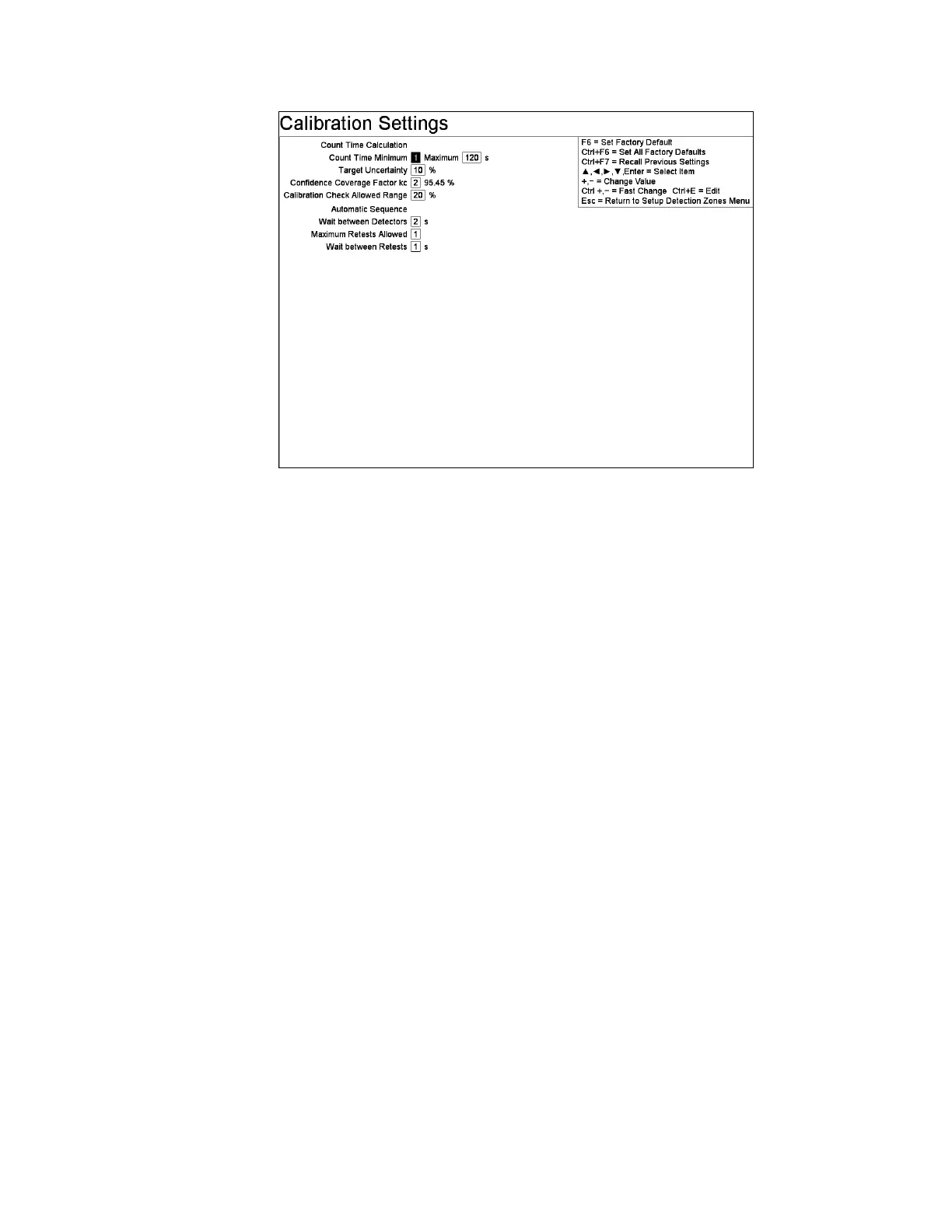Chapter 5 Parameters Definition
128
Figure 57 The Calibration Settings Screen
Count Time Calculation Settings
Count Time Minimum/Maximum: These items set the allowable range for the
counting time during a calibration collection, as described in the Calibration screen.
The defaults are 1 s (Minimum) and 120 s (Maximum).
The activity for the selected calibration source is multiplied by the previous zone
efficiency to determine the Expected Count Rate. Calibration Collection Time is then
set to the Expected Count Rate plus twice the Background Rate divided by the square
of 0.05 times the Expected Rate. This provides the time required to obtain a
measured rate within 5% of the actual rate. If the calculated time is outside the
specified range then the collection time is set to the limit. To establish a fixed
counting time, set the Minimum and Maximum to the same value. See F7 – Alarm
Test Settings on page 133 for the formula used (Equation 2 to Equation 5 starting on
page 135.
Target Uncertainty: Setting specifies the Relative Expanded Uncertainty for which
the Count Time is calculated. Count time calculation assumes existing efficiency
value is correct to get expected rate from calibration source. (see Supplementary
Bayesian Methodology User's Manual, Section Count Time Calculation
Confidence Coverage Factor kc: Setting is used when converting between Standard
Uncertainty and Expanded Uncertainty. Default value is “2.0” 95.45%. The Coverage
Factor (kc) is related to confidence in measured value by (two tailed) integration of
standard distribution from - kc to + kc (refer to Supplementary Bayesian
Methodology User's Manual, Section Uncertainty Confidence Level (Coverage
Factor).
Calibration Check Allowed Range: Setting is used to flag Default setting is
“20.0%” values in Calibration Check Results printout (CALCHECK.TXT). Refer to
